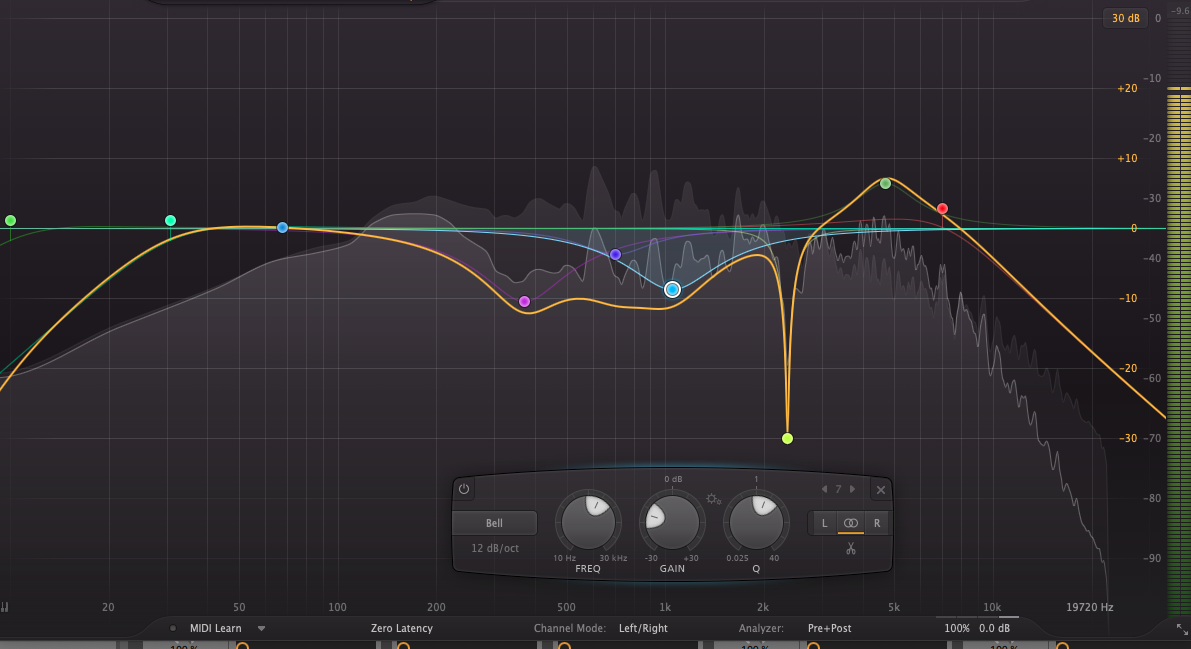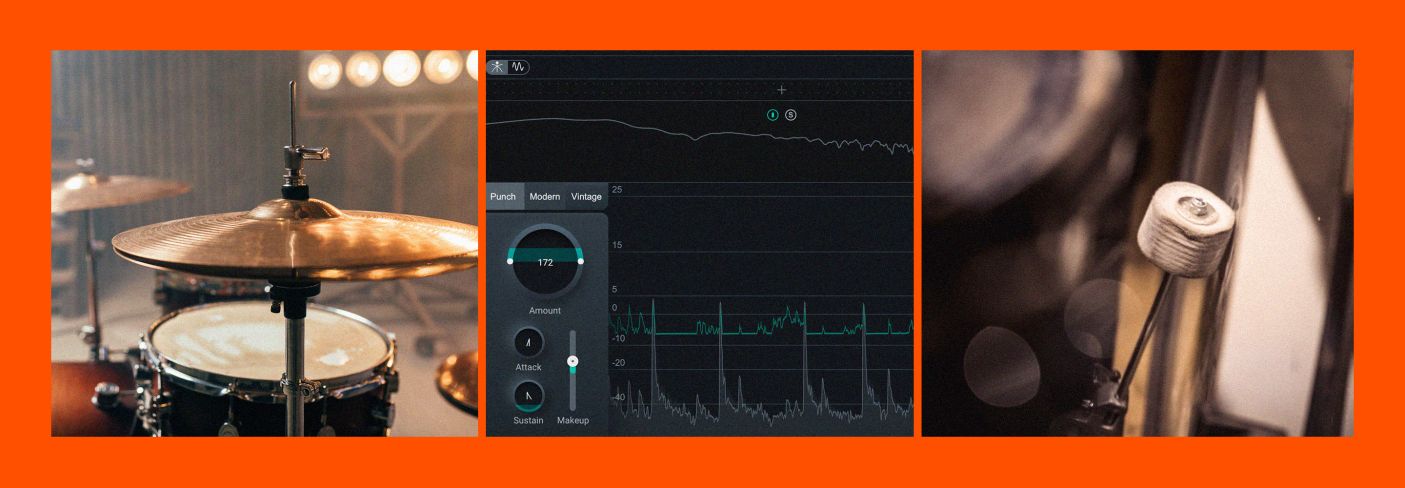Kick drum EQ involves boosting low frequencies and cutting high frequencies for a punchy sound. It enhances the drum’s character and presence in the mix.
To achieve an impactful kick drum sound, proper EQ settings play a crucial role. By selectively boosting and cutting specific frequencies, you can shape the kick drum’s tone to cut through the mix clearly and provide the desired impact. Understanding how each frequency range affects the kick drum’s overall sound can help you achieve a balanced mix that emphasizes the low-end energy while maintaining clarity and definition.
With the right kick drum EQ techniques, you can create a professional-sounding mix with a powerful and well-defined kick drum sound.

Credit: mixedinkey.com
The Importance Of Kick Drum Eq
Kick drum EQ is crucial in achieving a well-balanced mix. By enhancing the low-end frequencies and shaping the sound, you can create a powerful foundation for your music. Understanding the role of kick drum EQ and choosing the right kick drum sound are key aspects of achieving professional-sounding mixes.
Choosing The Right Kick Drum Sound
Start by selecting a kick drum sample or mic that fits the genre and style of your music. Ensure it has a good balance of punch and low-end rumble to cut through the mix. Experiment with different samples and settings to find the perfect kick drum sound.
Understanding The Role Of Kick Drum In A Mix
The kick drum serves as the heartbeat of a song, providing rhythm and groove. Proper EQ can help define the kick drum’s presence in the mix, ensuring it complements other instruments without overpowering them. By sculpting the frequencies, you can achieve clarity and impact in your mixes.

Credit: apps.microsoft.com
Fundamentals Of Kick Drum Eq
The fundamentals of Kick Drum EQ involve understanding the frequency range and basic EQ techniques to effectively enhance the sound of a kick drum.
Frequency Range Of Kick Drum
A kick drum typically ranges from 50Hz to 5kHz, with the fundamental frequency around 50Hz for that deep low-end punch.
Basic Eq Techniques For Kick Drum
- Boosting around 60-80Hz enhances the low-end thump of the kick drum.
- Reducing frequencies around 200-400Hz helps minimize muddiness in the mid-range.
- Adding a slight boost around 2-5kHz can improve the attack and presence of the kick drum.
Advanced Kick Drum Eq Techniques
In the world of audio engineering, crafting the perfect kick drum sound is essential for creating a powerful and defined low-end punch in your mix. While basic EQ techniques can help shape the character of the kick drum, advanced kick drum EQ techniques can take your sound to the next level. In this article, we’ll explore some advanced kick drum EQ techniques that can help you achieve punch, clarity, and overall impact in your mixes.
Using Dynamic Eq For Punch And Clarity
Dynamic EQ is a powerful tool for shaping the sound of a kick drum. By applying dynamic EQ to the kick drum, you can target specific frequency ranges and control them based on the input signal’s amplitude. This allows you to enhance the punch and clarity of the kick drum without compromising its natural sound. Using a dynamic EQ plugin, you can set thresholds and adjust gain reduction for different frequency bands, ensuring that the kick drum remains prominent and impactful in the mix.
Notching And Resonance Control
Notching and resonance control are indispensable techniques for addressing problematic frequencies in a kick drum. By using a precise parametric EQ, you can identify and notch out unwanted resonances that may muddy the sound of the kick drum. Additionally, applying a narrow notch filter can help in controlling any ringing or unwanted resonances that may occur at specific frequencies, allowing the kick drum to cut through the mix with clarity and definition.

Credit: www.izotope.com
Creative Kick Drum Eq Approaches
Kick drums are a foundational element of any music genre, and achieving the perfect kick sound can greatly impact the overall mix. While standard EQ techniques like boosting or cutting specific frequencies can be effective, taking a more creative approach to kick drum EQ can add depth, power, and excitement to your tracks. In this article, we’ll explore two unconventional methods for shaping your kick drum sound: enhancing subsonic frequencies for impact and adding character with harmonic saturation.
Enhancing Subsonic Frequencies For Impact
When it comes to kick drum EQ, it’s essential to pay attention not only to the audible frequencies but also to the subsonic range. Boosting the sub-bass frequencies can give your kick drum a powerful impact that can be felt by the listener – think of it as the “thump” you feel in your chest at a live concert. To enhance these subsonic frequencies:
- Start by identifying the fundamental frequency of your kick drum, usually around 60Hz to 80Hz.
- Apply a narrow boost in this frequency range to bring out the low-end punch.
- Experiment with different Q values to find the sweet spot that adds impact without causing muddiness in the mix.
- To further enhance the subsonic frequencies, consider using a harmonic exciter or a subharmonic synthesizer plugin.
Adding Character With Harmonic Saturation
In addition to boosting specific frequencies, adding harmonic saturation to your kick drum can introduce desirable distortion and warmth, giving it character and presence in the mix. Here’s how you can achieve this:
- Start by duplicating your kick drum track or sending it to an aux channel.
- Apply a saturation plugin, such as a tape emulator or a tube preamp, to the duplicated track or aux channel.
- Adjust the saturation parameters to taste, adding harmonic content and subtle distortion.
- Blend the saturated track or aux channel with the original kick drum, using a balance that complements the overall sound.
By creatively utilizing kick drum EQ techniques like enhancing subsonic frequencies and adding harmonic saturation, you can elevate your drum sound to new heights. These unconventional approaches allow you to shape the kick drum in unique ways that add impact and character, while still maintaining a balanced mix. Experiment with different settings, trust your ears, and let your creativity guide you in crafting the perfect kick drum sound for your music.
Mixing Tips For Kick Drum Eq
Enhance your kick drum sound with these mixing tips for EQ. Adjust the low frequencies to bring out the thump and experiment with the mid-range for punch and attack. Use a high-pass filter to remove unwanted low-end rumble and a low-pass filter to control the highs.
Kick drum is one of the most essential elements in a mix, providing the foundation and impact that helps drive the entire song. Properly applying EQ techniques to the kick drum can result in a more balanced and powerful mix. In this article, we will explore two important aspects of kick drum EQ: Balancing Kick Drum with Bass and Creating Space for Kick Drum in the Mix.
Balancing Kick Drum With Bass
Achieving the perfect balance between the kick drum and bass guitar is crucial for a tight and impactful low end. When mixing, it’s important to consider the frequencies that both instruments occupy to avoid clashing and muddiness in the mix. Here are some tips to help you achieve a balanced kick drum and bass: 1. Start by soloing the kick drum and bass to identify any conflicting frequencies. 2. Use an EQ plugin on both tracks to identify and reduce overlapping frequencies, such as boosting the kick drum’s attack around 2-4 kHz while cutting the same range on the bass. 3. Consider sidechain compression, where the bass is ducked slightly every time the kick drum hits, allowing the kick to cut through the mix without overpowering the bass.
Creating Space For Kick Drum In The Mix
In order for the kick drum to be heard clearly and stand out in the mix, it is important to create enough space for it. Here are some techniques to help you achieve this: 1. Use high-pass filtering on non-essential tracks to remove unnecessary low-frequency content. This will help prevent the kick drum from competing with instruments that don’t require a strong low end. 2. Consider using a low-shelving EQ curve on the master bus to gently reduce the low end of the entire mix, allowing the kick drum to occupy that space. 3. Experiment with panning other instruments or sounds that may clash with the kick drum slightly off-center, allowing the kick to sit more prominently in the center of the stereo image. Remember, the key to a successful kick drum EQ is to make subtle adjustments rather than drastic changes. Take your time to listen and analyze how each adjustment affects the overall mix, and trust your ears to guide you in achieving a balanced and impactful kick drum sound.
Frequently Asked Questions On Kick Drum Eq
What Is The Ideal Eq For Kick Drum?
The ideal EQ for a kick drum typically involves boosting the low frequencies around 60-80 Hz for warmth and punch, cutting the muddiness around 200-400 Hz, boosting the attack around 2-4 kHz for clarity, and adding a high shelf above 8 kHz for brightness.
Be cautious not to over-EQ.
How Do You Get A Punchy Bass Drum Eq?
Enhance bass drum punchiness by boosting frequencies between 60-80 Hz and cutting around 200-400 Hz. Experiment with different EQ settings to achieve desired impact.
What Frequency Should I Cut My Kick Drum?
Cut the kick drum at around 50-100 Hz for warmth and punch. Remove frequencies around 200-300 Hz for clarity. Avoid boosting below 50 Hz to prevent muddiness. Experiment to find the sweet spot for your kick drum’s sound.
What Frequency Is A Punchy Kick Drum?
A punchy kick drum typically has a frequency range between 60 Hz and 120 Hz.
Conclusion
In crafting the perfect kick drum EQ, precision is your ally. Don’t be afraid to experiment with different settings to find the sweet spot. Remember, a balanced mix is key to achieving a professional sound. With these techniques, you can take your drum tracks to the next level and ensure they stand out in the mix.